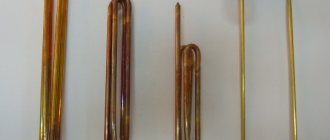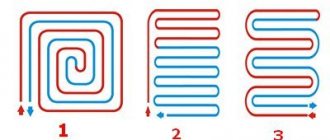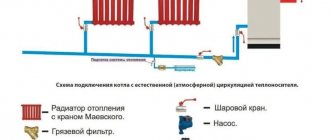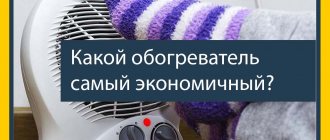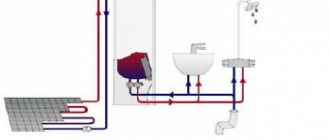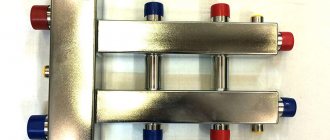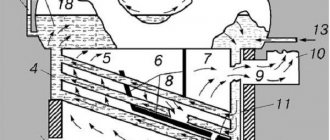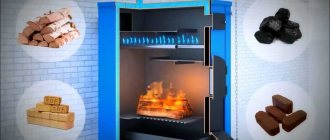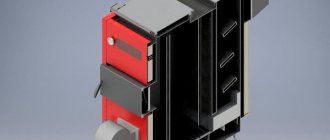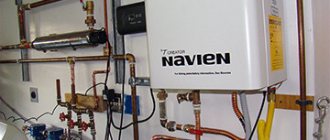Tubular electric heater (TEH)
Electric resistance heater, consisting of a heating element with contact rods at the ends, pressed together with the filler into a metal shell in accordance with the drawing. Depending on the area of application and customer requirements, heating elements can have different configurations (shapes).
Tubular heating element design:
1 — Terminals Used to connect to the power source.
2 - Contact rod Being inside the heating element, it remains unheated and determines its cold (non-working) zone. Can be made of nickel-plated, stainless or ordinary steel.
3 - Tubular shell Most often made of stainless steel, copper or titanium.
4 - Heating coil It consists of one, two or three wires made of an alloy with high resistivity, such as chromium-nickel or ferrochrome.
5 — Insulating filler Provides heat transfer from the coil to the shell, insulates from the shell, and in multi-spiral heating elements insulates the coils. Typically, magnesium oxide powder (periclase) is used, which has good thermal conductivity and dielectric strength during pressing.
6 — Sealant Prevents moisture from entering the heater.
7 - Rod insulator Made of ceramic or thermoplastic.
Operating principle: A contact rod (2) having current-carrying terminals (1) is inserted into the shell (3). A heating coil (4) with high ohmic resistance is welded to the rod (2), which determines the working (hot) zone of the heater. To avoid a short circuit to the housing, the spiral (4) is insulated from it by filler (5), which is a dielectric with good thermal conductivity. The ends of the rod are also insulated with special plugs (7). When the spiral (4) is heated, the heat reaches the shell (3) through the insulation (5), which heats the external environment (gas, liquid, solids).
Areas of use:
- in mechanical engineering: for heating molds, dies, casting molds, baths with acids and alkalis, in paint booths, for melting low-melting metals, etc.;
- in the food industry: for digesters, for confectionery production, baking industry, dairy production, etc.;
- in the chemical industry: for the production of rubber, caoutchouc, in the pulp and paper industry, in the oil refining industry, etc.;
- in medicine: for sterilizers, distillers, etc.;
- in everyday life: for space heating, in household electrical appliances (kettles, irons, etc.)
Currently in Russia there are three state standards for heating elements
- GOST 13268-88 - Tubular electric heaters;
- GOST 19108-81 - Tubular electric heaters (TEH) for household heating electrical appliances;
- GOST 4.150-85 - System of product quality indicators. Tubular electric heaters (TEH).
How IR heaters work
In essence, the design of an IR heater is simple and unpretentious: the heating element - the emitter is placed in a housing of one design or another, inside the housing there is a reflector - a reflector, terminals for connecting the emitter, and outside there are terminals for external wires. The figure shows just such a simple version of the heater.
IR heater design: 1 - reflector (reflector), 2 - protective grid, 3 - switch, 4 - mounting bracket, 5 - infrared carbon lamp, 6 - cover, 7 - terminal box, 8 - power cord, 9 - plug.
It is immediately noticeable that the heater of this design is very similar to a spotlight for halogen lamps, used to illuminate advertisements, building facades, porch steps, and part of the yard near the house. In general, some relatively small area, so-called local lighting.
Therefore, with the help of IR heaters, it is also possible to heat not the entire area of the room, but only some part of it. Energy savings are noticeable to the naked eye: why heat the entire room if you can heat the required corner? An example of spot heating is shown in the figure.
Spot IR heating
If you need to provide heating, for example in production, then you will need heaters of a slightly different design that can be installed in the ceiling, like lamps with fluorescent lamps. This option is shown in the figure below.
Heating of large rooms
You can find many similar heating schemes, because IR heaters are used to heat fairly large rooms: workshops, warehouses, workshops, and even small outdoor areas. For example, this could be a gazebo near the house or a veranda of a restaurant with tables.
Heating elements for electroplating
They are made with a shell of quartz glass, stainless steel or titanium and are designed for heating various substances and solutions, including aggressive ones. Mainly used in electroplating and chemical industries. A minimum immersion depth mark is applied to the product shell. During operation, it is necessary that the level of the heated liquid is above this mark. Submersible heating elements are used for heating organic acids, solutions containing the metals nickel Ni, chromium Cr, iron Fe, copper Cu, zinc Zn, etc., tap and sea water, fluxes, etc.
Heating elements for heating oil
These double-ended oil heating elements are intended for heating oil, fats, bitumen and other fatty substances in baths and other containers. Heating elements are manufactured bent in different planes with different fastening elements.
- Maximum temperature of the heated medium, °C – 250;
- Maximum permissible surface load, W/cm2 – 3.5;
- Shell diameter, mm – 8.5-16;
- The maximum power (in kW) per 1 meter of active length of the heating element is 0.93-1.75.
High temperature heating elements
They are widely used in electric furnaces at temperatures up to 1700°C, and sometimes up to 1800°C. Depending on operating temperatures, they are made on the basis of lanthanum chromite, silicon carbide, molybdenum disilicide and other alloys that have a high oxidation temperature and high corrosion resistance. They can be used in both continuous and intermittent operating modes with complete cooling between cycles.
The figure shows the following heating elements: a - based on lanthanum chromite (operating temperature up to 1800°C); b - based on silicon carbide (up to 1400°C); c - based on molybdenum disilicide (up to 1800°C); d - fechral (up to 1400°C).
Explanation of the abbreviation, scope and advantages
The abbreviation TEN sounds like a tubular electric heater.
The device has high power and efficiency, allowing for rapid heating of liquid, gaseous and solid media. It is used as a structural element in industrial furnaces, water heaters, climate control equipment, production equipment and many other areas. Advantages of heating elements:
- power;
- performance;
- efficiency;
- versatility;
- life time.
Flexible heating elements
Their principle of operation is based on the release of heat by wires that have high resistance when electric current passes through them. Can be bent into any shape directly by the user. There are options for attaching to the surface using self-adhesive film. With optimal heat transfer, the operating temperature reaches 200°C (short term up to 230°C). Typically used for space heating, underfloor heating, anti-icing, medical, food and aerospace applications.
Flexible heating cables and tapes
Designed to maintain specified temperatures (up to 180°C), including in explosive areas. They are a fibrous heating element made of nichrome, braided with fiberglass and covered with a sealing sheath of polyethylene or rubber. Due to the large heating surface, reliable electrical and waterproofing, low weight and elasticity, they are used in the gas, chemical, and oil industries for heating and compensating heat losses of pipelines, heat exchangers, as well as in everyday life.
Flat heating elements
Their design consists of a sheet metal body 0.25–0.5 mm thick, made of carbon or stainless steel, inside of which there is a heating element made of a material with high electrical resistance (nichrome wire, tape). The coils of the product are insulated from each other and from the body using insulating material (ceramics (a), silicone (b), micanite (c), etc.). Main advantages: small thickness, uniform heating over the entire surface, efficiency, environmental safety, high reliability and durability. They are used for heating premises (convectors, air heaters, heat guns, heat curtains), in stamping and vulcanizing presses, in the chemical industry (heating baths with an aggressive environment), in household products (drying shoes, boiling mugs, etc.)
IR radiation, what it is and how it works
Infrared radiation is one of the components of the solar spectrum. IR rays are found in the lowest frequency zone of sunlight. They are the ones who bring warmth to us on Earth. In this case, infrared rays pass unhindered through the air without heating it at all. The earth's surface heats up, and everything that comes in the way of the sun's rays. And only then, from warm objects, the air warms up. This is why the air is cool in the morning until the sun rises. Infrared heaters, which are the basis of industrial and household heaters, also work exactly the same way.
Of course, the spectrum of man-made IR heaters is not as wide as that of sunlight, and is located in the long-wave region of the IR range with a wavelength λ = 50-2000 microns. Moreover, the lower the temperature of the heated body, the longer the wavelength. In general, the range of IR radiation is much wider and is divided into three subranges:
- short-wave region: λ = 0.74-2.5 µm
- mid-wave region: λ = 2.5-50 µm
- long-wave region: λ = 50-2000 µm
But infrared heating elements only work in the long-wavelength part of the IR spectrum. Various IR heating elements are the basis for creating infrared heaters. Since heat from infrared heating elements is transmitted mainly by thermal radiation, they are often called infrared emitters.
Ceramic infrared heating elements
Such products consist of a ceramic body into which nichrome spirals are mounted. Under the influence of electric current, this element heats up to a temperature of 450-470°C. The energy of the heated spiral heats up the ceramic body, the surface of which in turn begins to emit a stream of infrared energy, acting as a filter and normalizing the radiation of the spiral. Widely used in infrared cabins/saunas, chemical industry, glass making equipment, etc.
Which convector to choose
If we talk about which heater is better to choose, the answer will be ambiguous. With all the obvious advantages, each type has its own disadvantages. For example, the tubular element has the longest glow time. During active operation, it can make clicking sounds and squeaks caused by the expansion of the structure. In turn, the monolithic element scares off most buyers due to its high cost. Not everyone is willing to overpay for a significant degree of protection and minimal heat loss.
Most often, consultants in stores recommend purchasing convectors with a monolithic element or heating element.
The decision about which convector is more efficient should be made based on the characteristics of the heated room.
- If the room is not humid and the speed of air heating does not play a key role, a conventional heating element is best suited.
- However, if it is necessary to constantly maintain comfortable conditions in the room, it would be more correct to give preference to a monolithic element. An efficient convection system will allow you to save a little on electricity.
- You can also turn your attention to combined type models, such as an infrared heater with a convection function. This device combines heating through a heating element and an infrared element, which allows you to quickly warm up the room with little electrical energy consumption.
Experts advise paying attention not only to the heating element. Maximum operating power, spatial arrangement, mobility and ergonomics of the housing also make a significant contribution to efficiency. Carefully study the technical characteristics of the device, and you can easily choose the convector that suits you.
Infrared quartz emitters
The emitters are quartz tubes with a resistive spiral inside. Thermal radiation emanating from the heating element is absorbed by surrounding objects, which, when heated, reflect heat, as a result of which the air temperature rises. Due to the short response time, it is recommended to use such devices primarily in cyclical or frequently interrupted work processes: drying fruits and vegetables/paint/varnish/fabrics, pasteurization, sterilization, thermo- and vacuum forming, keeping food hot. They are also used to heat rooms.
